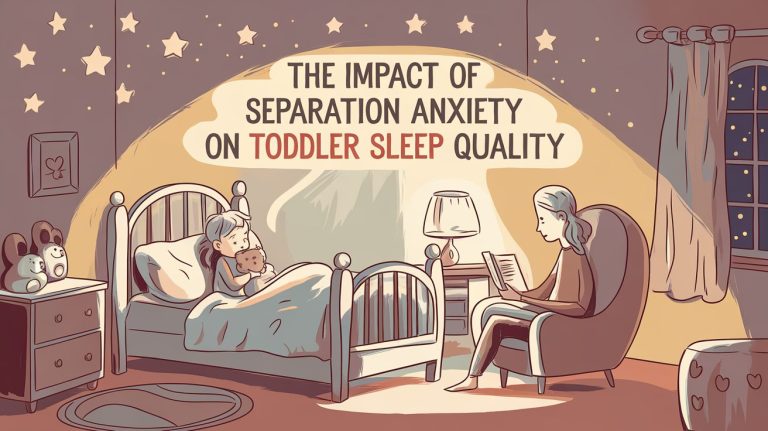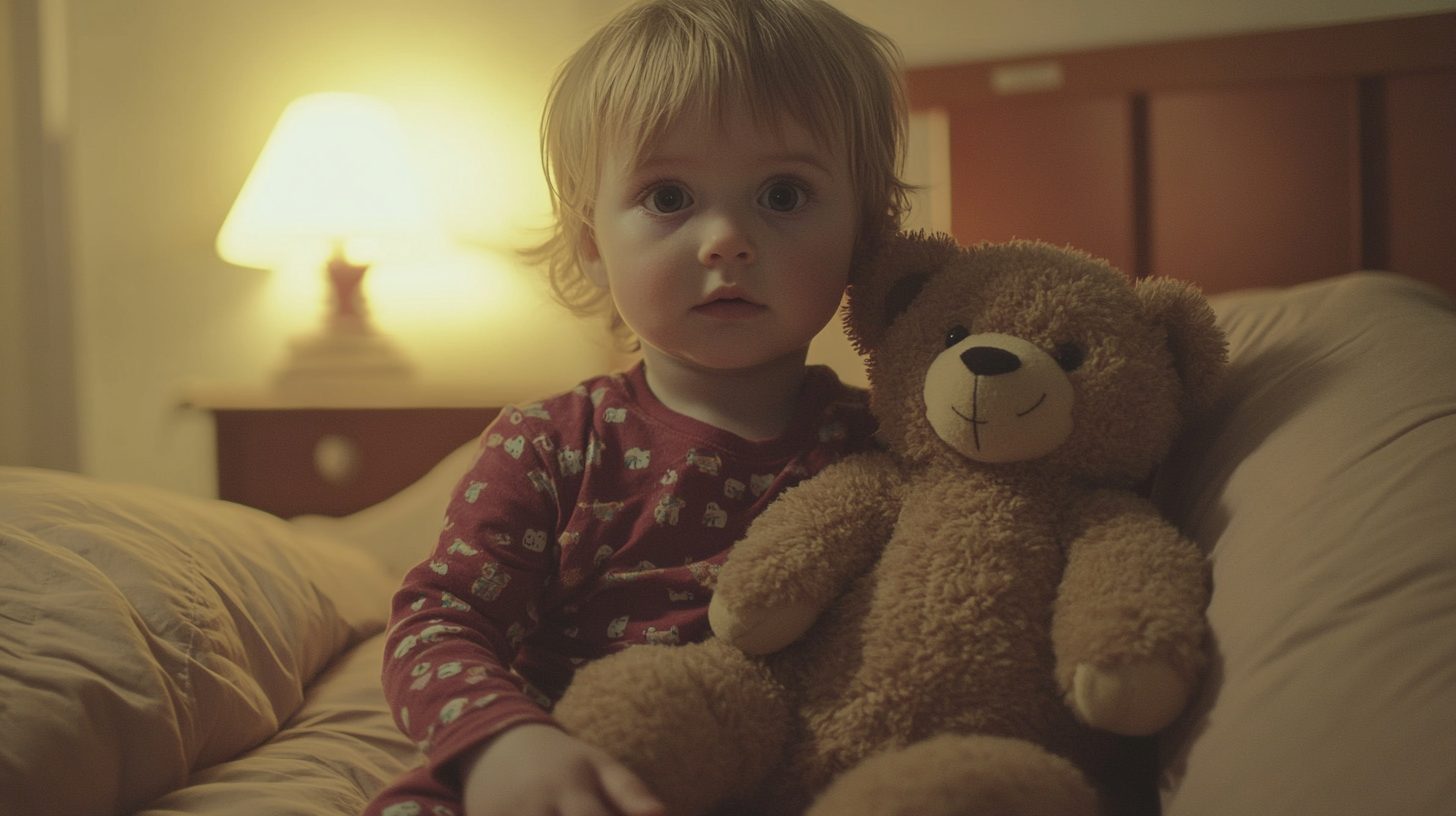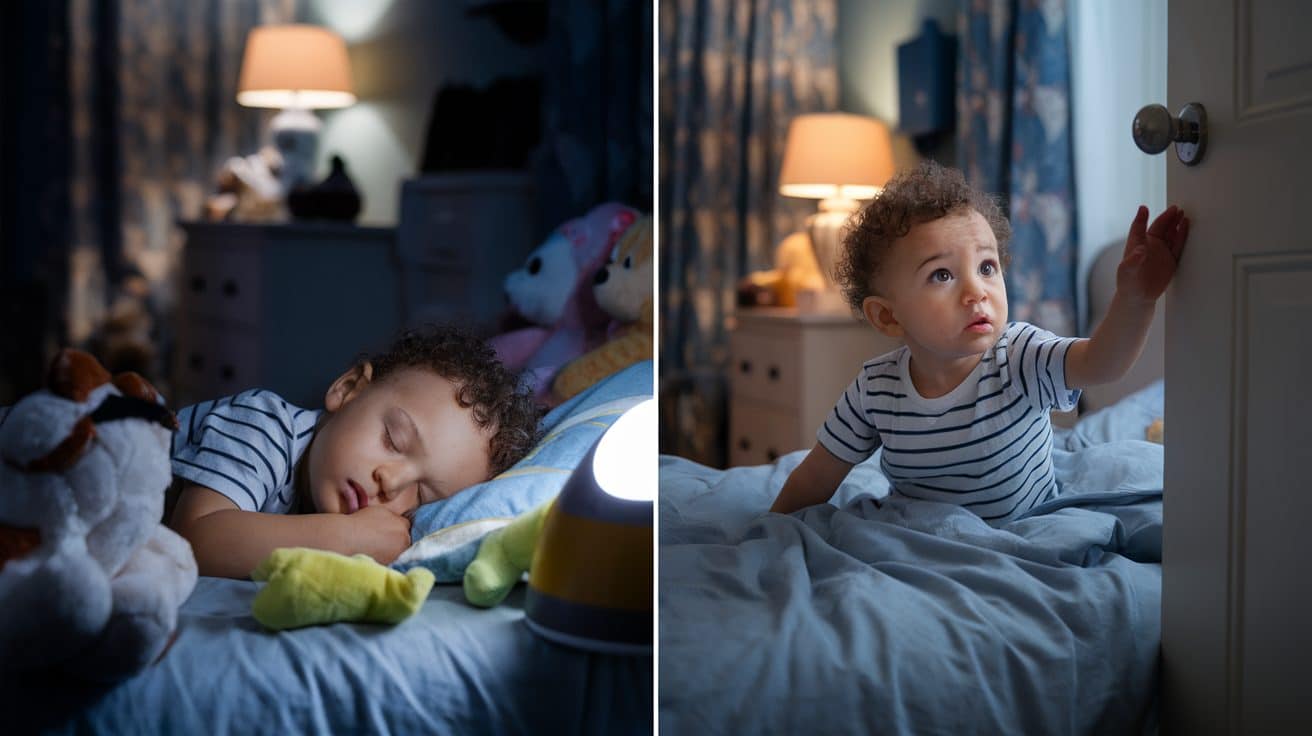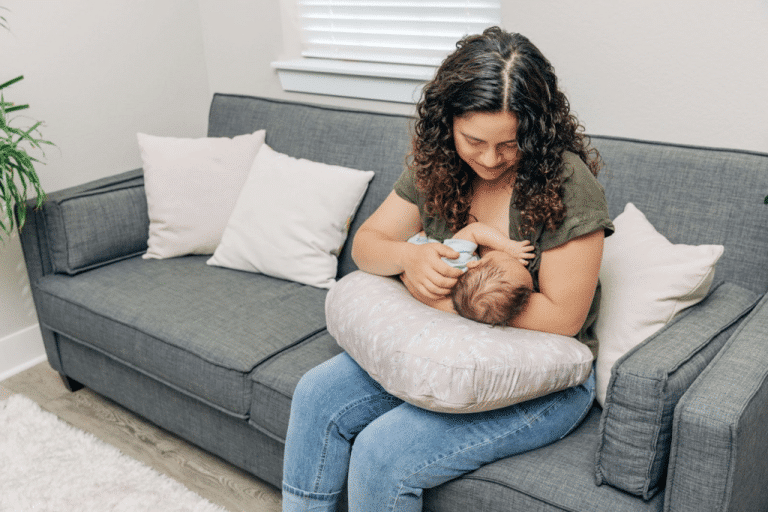Parents worldwide know the bedtime struggle: their toddler cries, clings, and refuses to sleep alone.
This common challenge affects both children’s rest and parents’ peace of mind. A sleep-deprived toddler often means an exhausted family.
The good news is that parents can help their little ones sleep better with the right methods and understanding.
Simple changes in bedtime routines and responses to nighttime wake-ups can make a big difference in how toddlers cope with separation at bedtime.
This blog explains how separation anxiety affects toddler sleep, provides signs to watch for, and provides practical tips for parents to create better sleep habits.
Also, we’ll share proven techniques that work for real families.
Understanding Separation Anxiety in Toddlers
Toddlers show strong feelings when away from their parents – it’s a natural part of growing up.
Between ages one and three, little ones start to understand they’re separate from mom and dad, but they haven’t yet learned that separations are only temporary.
Their brains are still developing the skill to remember that loved ones come back.
When toddlers can’t see their parents, especially at bedtime, they might feel scared or upset.
This reaction comes from their growing awareness of the world around them. They notice when parents leave the room, and this can make them feel unsure and worried.
These feelings often show up stronger at night because darkness can make toddlers feel less secure. Also, being tired makes it harder for them to handle their emotions well.
Understanding these normal behaviors helps parents respond with patience and care.
The Connection Between Separation Anxiety and Toddler Sleep Problems
Separation anxiety and sleep troubles often go hand in hand with toddlers.
When it’s time for bed, these feelings can make sleep harder to come by. Parents often see their usually happy toddlers become clingy and tearful at bedtime.
Sleep problems linked to separation anxiety often show up as:
- Fighting bedtime with tears and pleas for “one more hug.”
- Waking up several times at night calling for parents
- Refusing to fall asleep without holding a parent’s hand
- Getting out of bed repeatedly to check if parents are still around
These behaviors happen because toddlers feel safe when close to their parents.
The quietness and darkness of bedtime can make their worries stronger. Their young minds haven’t yet learned that sleep is just a short break, not a long goodbye.
When toddlers feel anxious about being alone, their bodies release stress hormones.
This makes it harder for them to relax and drift off to sleep. The result? Both parents and toddlers end up tired and frustrated.
Key Triggers of Separation Anxiety at Bedtime
Understanding what sets off a toddler’s separation fears at bedtime helps parents tackle sleep issues more effectively.
Let’s look at common triggers that can make bedtime harder for little ones.
- A new baby in the family causes shifts in attention and routines
- Moving to a big kid bed from a crib
- Changes in daily schedule or caregivers
- Starting daycare or preschool recently
- Recent family stress or changes at home
- Overstimulation from screens before bedtime
- Being overtired or missing regular nap times
- Dark rooms and unfamiliar shadows
- Loud or strange noises that seem scary
- Missing a comfort item like a stuffed toy
- Recent illness or time away from home
Spotting these triggers early lets parents plan ahead and create better bedtime experiences. Small changes in how families handle these situations can lead to better sleep for everyone.
How to Recognize Separation Anxiety in Toddler Sleep Patterns
Bedtime Resistance:
A toddler might take longer to get ready for bed, ask for water repeatedly, or beg for extra stories.
They might cry, throw tantrums, or make reasons to leave their room. These behaviors often start as soon as parents mention bedtime, showing their worry about the coming separation.
Changes in Sleep Schedule:
Parents might notice their toddler fighting naps or staying awake later than usual.
Some children wake up earlier in the morning or have trouble getting back to sleep after nighttime wake-ups.
This happens because their minds are busy with worry instead of relaxing into sleep.
Physical Signs of Stress:
Watch for tummy aches or headaches at bedtime.
Toddlers might also show more clinginess throughout the day.
Some children become extra fussy about food or show changes in their usual happy mood. These physical signs often get stronger as bedtime gets closer.
Nighttime Wake-Ups:
Look for patterns in when and how often a toddler wakes up. They might call out for parents several times a night or appear in the parents’ room looking for comfort.
Some toddlers have trouble falling back asleep without a parent nearby, even after brief wake-ups.
Changes in Comfort Item Needs:
Some toddlers suddenly need more comfort items to sleep.
They might ask for multiple stuffed animals, blankets, or toys in their bed.
This shows their attempt to create security when parents aren’t present, serving as stand-ins for parental comfort.
Increased Need for Bedtime Rituals:
Parents might notice their toddler becoming very rigid about bedtime routines.
Skipping even a small part of the routine can lead to upset. This happens because routines help toddlers feel safe and in control when facing separation.
Morning Behavior Changes:
Watch for shifts in how toddlers act when they wake up. Some become clingy in the morning or show poor sleep, like crankiness or tired eyes.
These morning signs often point to anxiety-disrupted sleep during the night.
Practical Solutions to Ease Separation Anxiety for Better Sleep
Parents need reliable ways to help their toddlers feel secure at bedtime.
Here are tested methods that build confidence and improve sleep, sorted into key areas for easy implementation.
Create a Consistent Bedtime Routine
- Set up a simple 20-30-minute routine with calm activities like reading books or singing quiet songs.
- Keep the same steps in the same order every night to give your toddler a sense of what comes next.
- Include a quick cleanup of toys and putting on pajamas as regular parts of the routine.
- End with a special goodnight phrase or gesture that your toddler can count on hearing each night.
- Make sure both parents know and can follow the same routine steps
Build Confidence During the Day
- Practice short separations during playtime, starting with just a few minutes.
- Play peekaboo and hide-and-seek to teach that parents always come back
- Give plenty of hugs and attention during wake times
- Support independent play in safe spaces while staying nearby
Set Up a Sleep-Friendly Environment
- Use a dim night light to make the room less scary
- Keep the room at a comfortable temperature
- Add white noise to mask household sounds
- Place favorite stuffed animals within easy reach
- Create a cozy sleeping space with familiar bedding
- Remove any items that cast scary shadows
Use Positive Reinforcement
- Create a sticker chart for good bedtime behavior
- Praise small steps toward independent sleep
- Share success stories about good nights
- Give extra morning cuddles after good sleep efforts
Respond to Night Wakings Calmly
- Keep interactions brief and boring during night checks
- Use a quiet voice and minimal light
- Remind your toddler that it’s still sleep time
- Return them to their own bed consistently
Use Comfort Objects Effectively
- Help your toddler pick a special stuffed animal for bedtime
- Include the comfort item in daytime activities to build attachment
- Keep a backup of the chosen comfort item if possible
- Consider giving them something of yours, like a T-shirt
- Make sure all comfort items stay in bed to help with sleep cues
Gradual Departure Techniques
- Start by sitting next to your toddler’s bed until they fall asleep
- Move your chair a bit further away each night over a week or two
- Tell your toddler exactly when you’ll come back to check on them
- Once outside the room, stick to your promised check-in times
Handle Setbacks With Care
- Stay patient during sleep disruptions from illness or travel
- Return to normal routines as soon as possible
- Keep changes in the bedroom minimal during tough times
- Remember that progress isn’t always linear
- Avoid introducing new sleep habits during difficult periods
When to Consult a Professional To Resolve Sleep Anxiety in Toddler
Parents should watch for signs that show when regular bedtime troubles might need expert help.
Some clues include sleep problems that last more than a few weeks or get worse over time.
If a toddler shows extreme fear, panic, or distress at bedtime despite using good sleep habits, it might be time to talk to a doctor.
Other warning signs include when lack of sleep starts affecting daytime behavior, causing constant tiredness, mood changes, or problems with daily activities.
Parents should also note if their toddler often seems sad or shows big changes in eating habits.
A healthcare provider can check if there are other reasons for sleep troubles, like health issues or developmental concerns.
They can suggest specific strategies that fit each family’s situation and might recommend working with a child sleep specialist if needed.
The Bottom Line
Creating better sleep habits for toddlers with separation anxiety takes time and patience.
When parents understand why their little ones worry at bedtime, they can help them feel safe and secure.
Small steps toward independent sleep often work better than big changes all at once.
Remember, every child responds differently to sleep strategies. What works for one family might need adjusting for another.
The key is staying consistent with chosen methods while showing plenty of love and support along the way.
If you’re dealing with toddler sleep troubles, try the tips shared in this article. Start with creating a steady bedtime routine and slowly build your child’s confidence about sleeping alone.
Most importantly, trust that with time and the right approach, both you and your toddler will find peaceful nights again.











